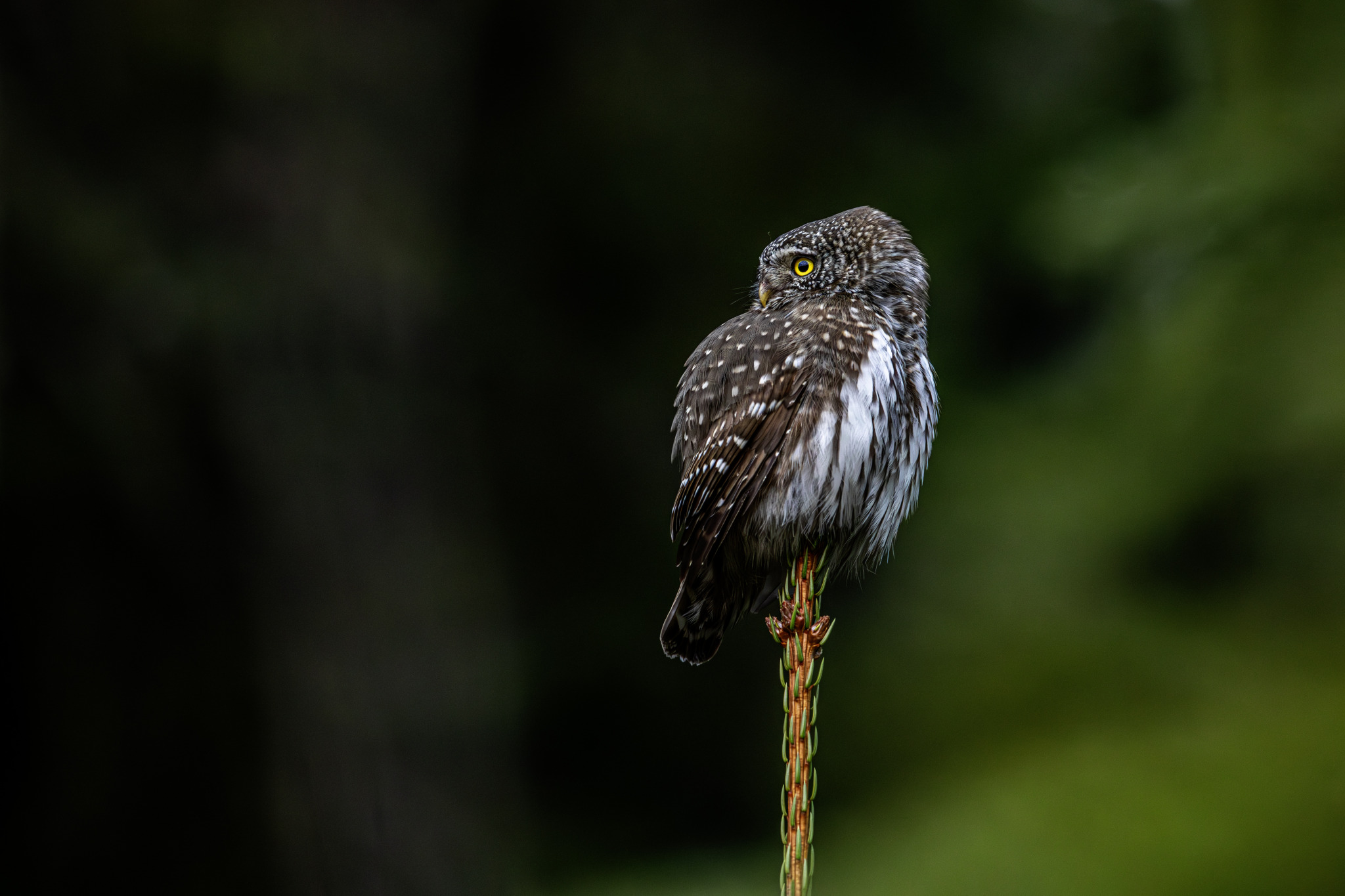The Eurasian Pygmy Owl (Glaucidium passerinum) is the smallest owl species in Europe, renowned for its diminutive size, feisty behavior, and distinctive whistling call. Despite its size, this owl is a formidable predator with sharp hunting skills.
Physical Description
- Size:
- Length: 15–19 cm (6–7.5 inches).
- Wingspan: 32–39 cm (12.5–15.5 inches).
- Weight: 50–80 g (1.8–2.8 oz).
- Plumage:
- Grayish-brown with white streaks on the belly and spots on the head.
- Yellow eyes with a white “eyebrow,” giving it an alert expression.
- Tail is relatively long and barred with brown and white bands.
- Beak and Feet:
- Small, hooked beak and strong talons for grasping prey.
Behavior
- Diet:
- Feeds on small birds, mammals (like voles and mice), and insects.
- Stores prey in tree cavities for later consumption.
- Hunting Style:
- Hunts during dawn and dusk (crepuscular) but is also active in daylight.
- Uses a sit-and-wait strategy, swooping down swiftly on prey.
- Call:
- A melodic, high-pitched whistle that carries long distances, especially during mating season.
Habitat
- Prefers coniferous and mixed forests, often with old-growth trees.
- Found at elevations ranging from lowlands to mountain forests, depending on the region.
- Nests in tree cavities, often using abandoned woodpecker holes.
Distribution
- Native to northern and central Europe and parts of northern Asia.
- Ranges from Scandinavia to the Alps and eastward into Siberia.
Breeding
- Season:
- Breeds from March to June, depending on the location.
- Nest:
- Does not build its own nest but relies on natural tree cavities or woodpecker holes.
- Eggs:
- Lays 3–7 white eggs, which are incubated by the female for about 28–30 days.
- Chicks:
- Fledge approximately 4–5 weeks after hatching.
Conservation Status
- Classified as Least Concern but faces threats from habitat loss due to deforestation.
- Stable populations in protected areas and old-growth forests.
Ecological Role
- Predation:
- Helps regulate populations of small mammals and birds.
- Indicator Species:
- Its presence indicates healthy, undisturbed forest ecosystems.
Interesting Facts
- Size Deception:
- Despite its small stature, the Eurasian Pygmy Owl is an aggressive predator capable of taking down prey larger than itself.
- Winter Adaptation:
- Stores excess prey in tree cavities during the fall to survive harsh winters.
- Vocal Mimicry:
- Smaller birds often mob it, mistaking its call for that of a larger predator.
Summary
The Eurasian Pygmy Owl (Glaucidium passerinum) is a fascinating blend of small size and big personality. Its adaptability, predatory prowess, and endearing appearance make it an integral part of forest ecosystems and a favorite among birdwatchers. Protecting its forest habitats ensures the survival of this tiny but mighty owl.
Visited 578 times, 41 visit(s) today
Views: 864
Subscribe to the newsletter:
